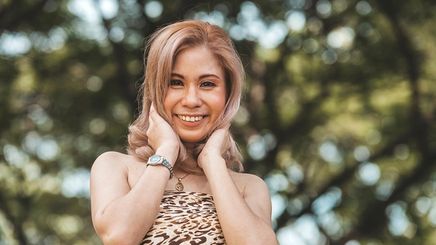
Although it might look like it on TikTok where kids are making videos using it as a hair coloring tool, purple shampoo is not just a cute fad that started yesterday. On the contrary, despite its pigmented nature, purple shampoo is not a hair dye. Learning about purple shampoo for the first time? Don’t worry. This article will explain everything you need to know about this colored hair staple. Read on to find out more.
What Does Purple Shampoo Do?
Purple shampoo features tiny molecules of purple dye that cancel out brassy, yellow tones on your hair. Think of it as an at-home toning product that can revive bleached blonde hair or any hair that’s chemically treated to become lighter.
To understand how it works, think of the color wheel and try to remember the basic theory about complementary colors. Purple, a secondary color, complements yellow, a primary color. Mix these pigments in equal amounts and they will cancel each other out, resulting in a grayish tone or ashy brown. It works the same way on hair.
Ideally, shouldn’t have yellow tones. However, sometimes a bad bleach job happens. and you’re left with yellow in your hair (usually when you wash it out too soon). To neutralize these yellow tones, you’ll need purple shampoo to decrease saturation and make it desirably ashy and cool-toned. Even if your hair is not blonde (maybe ), you can still count on purple shampoo to get rid of brassiness and keep your hair color looking good as new.
To tone your blonde or colored hair at home and remove brassiness, use TRESemmé Pro-Color Series Blonde Brilliance Shampoo. The formula features Micro Conditioning Technology that deposits violet pigments into the hair cuticle to and keeps hair healthy and smooth. Some people like to leave it in for a few minutes to let the color sink in. You could also do this with TRESemmé Pro-Color Series Blonde Brilliance Conditioner, which can give your hair more softness.
What Doesn’t It Do?
Purple shampoo cannot chemically alter the color of your hair; therefore, it can’t lighten it. It doesn’t make blonde hair lighter — that’s just an illusion brought about by the “cooling” effect of purple tones. Here’s a visualization. Remember your crisp, white high school uniform that turns just a teeny bit yellow with every wash? Certain detergents with blue pigments introduce a cool tone to yellowing whites. They don’t necessarily lighten them, but we associate these bluish tones with freshness and newness, hence the perceived lightening.
Silver vs. purple shampoo: What's the difference?
Both silver and purple shampoo neutralize yellow or brassy tones in light colored hair. They are both purple in color. Some brands of silver shampoo target those who have naturally gray or white hair, although it will have the same effect. If you're skipping wash day but want to revive your blonde locks, try a purple dry shampoo.
If you have bleached hair or if your hair color is prone to brassiness, consider adding purple shampoo for colored hair to your routine. Since its effects only last for one wash, using it regularly is the key to getting the best results. Once a week, leave it on longer to let the pigments soak into each strand. You’ll have brilliant blonde hair in no time.